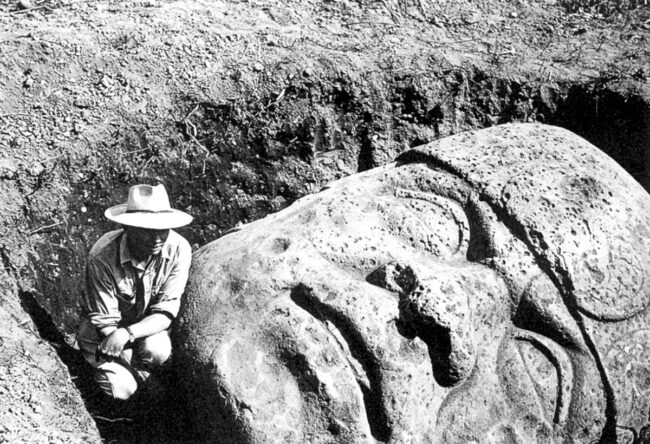The Olmec colossal heads are massive stone sculptures carved from basalt, depicting human faces with distinct features like fleshy cheeks and flat noses.
These heads, dating back to at least 900 BCE, are iconic symbols of the ancient Olmec civilization in Mesoamerica. Ranging from 3.8 to 11.2 feet tall, they were likely modeled after real individuals, possibly rulers or important figures.
h/t: vintag.es
The first recorded discovery occurred in 1862 at Tres Zapotes, but it wasn’t until Matthew Stirling’s excavation in 1938 that they gained widespread attention. His work led to deeper archaeological exploration of Olmec culture and the unearthing of more colossal heads.
Seventeen confirmed heads have been found across four major sites: San Lorenzo, La Venta, Tres Zapotes, and La Cobata. The basalt used for these sculptures was quarried from the Sierra de los Tuxtlas mountains, sometimes over 90 miles away, and transported using human labor and rudimentary tools.
Once at their destination, the stones were shaped with hard stone tools, as the Olmec lacked metal implements. Some heads were repurposed from older monuments, reflecting a tradition of honoring past leaders. Scholars view these heads as expressions of political power, possibly linked to ancestor worship or ceremonial practices.

